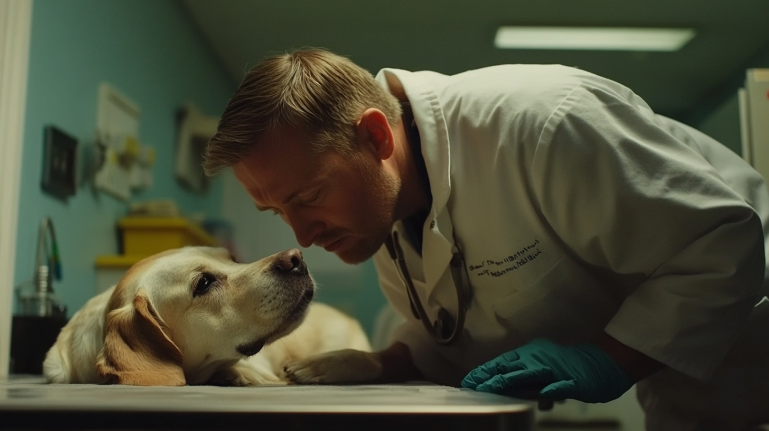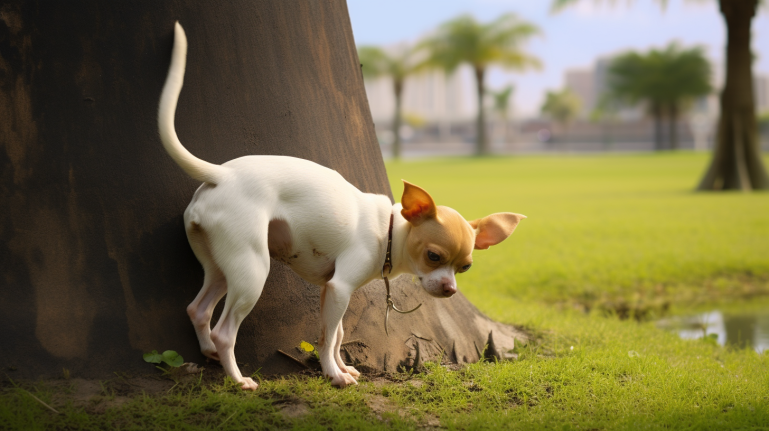As a loving dog owner, you may notice subtle changes in your pet’s behavior—unexpected accidents in the house or a shift in their bathroom habits. These small signs could indicate a more serious issue: a urinary tract infection (UTI). While it might seem like a minor problem, UTIs can cause significant health concerns if left untreated.
But don’t worry! Knowing how to spot the signs early can prevent serious complications. Here’s everything you need to know about recognizing, treating, and preventing UTIs in dogs, so your furry friend can stay healthy and happy.
What Is a UTI in Dogs?
A urinary tract infection (UTI) in dogs is one of the most common yet often overlooked health issues. UTIs occur when bacteria invade the urinary system, causing inflammation and discomfort. UTIs can range from mild to severe, and if untreated, they can lead to even more serious health problems.
Here’s the key takeaway: any change in your dog’s bathroom habits—frequent urination, painful urination, or accidents in the house—could signal a problem. Early detection is crucial for effective treatment.

Recognizing the Symptoms: Is Your Dog Suffering from a UTI?
Not every dog will show the same symptoms when suffering from a UTI, and it can be tricky to identify the infection based on behavior alone. However, these are the common signs of a UTI in dogs:
1. Frequent Urination
Your dog may start urinating more often than usual, sometimes in places they don’t normally go.
2. Difficulty Urinating
Straining to urinate or attempts that result in little to no urine being produced may indicate an infection.
3. Blood in Urine
Pink or red-tinged urine is a clear sign of a UTI and should not be ignored.
4. Accidents in the House
Even if your dog is house-trained, frequent accidents inside may signal a problem.
5. Painful Urination
If your dog cries or seems distressed when urinating, they may be experiencing pain or discomfort.

6. Excessive Licking of Genitals
Increased licking or biting of the genital area could suggest infection or discomfort.
7. Unusual Urine Smell
If your dog’s urine smells foul or unusually strong, it could indicate a UTI.
8. Increased Thirst
Excessive thirst could be a sign of dehydration or kidney strain due to the infection.
If you notice any of these signs, don’t wait—contact your veterinarian as soon as possible for a diagnosis.
Common Causes of UTIs in Dogs
UTIs in dogs can be caused by various factors, including:
- Bacterial Infections: The most common cause, where bacteria enter the urinary tract and multiply.
- Bladder Stones: Painful stones can obstruct the urinary flow, increasing the risk of infection.
- Tumors in the Bladder or Urinary Tract: Though rare, tumors can irritate the urinary system and cause infection.
- Congenital Abnormalities: Some dogs are born with structural issues in the urinary tract that make them more prone to UTIs.
- Chronic Diseases: Conditions like diabetes or Cushing’s disease can weaken the immune system and make dogs more susceptible to infections.
- Medications: Drugs such as steroids, which suppress the immune system, can increase the risk of UTIs.
- Prostate Issues in Male Dogs: Unneutered male dogs are more likely to experience prostate problems, leading to UTIs.

Who Is at Risk?
Certain dogs are more prone to developing UTIs:
- Female Dogs: Especially those that haven’t been spayed.
- Senior Dogs: Older dogs often have weakened immune systems, making them more vulnerable to infections.
- Dogs with Bladder Stones: Certain breeds are genetically predisposed to bladder stones, which increase the risk of UTIs.
- Unneutered Male Dogs: These dogs are more likely to develop prostate problems, leading to UTIs.
- Dogs with Preexisting Health Conditions: Dogs with diabetes or other chronic illnesses are more susceptible to UTIs due to weakened immune systems.

How Is a UTI Diagnosed in Dogs?
The most common method for diagnosing a UTI in dogs is through a urine sample, which can reveal bacteria, blood, and abnormal cells. If you suspect your dog has a UTI, your vet may request a urine sample during your visit. If that’s not possible, your vet may collect the sample directly from your dog’s bladder using a technique called cystocentesis.
Collecting a Urine Sample at Home
If you’re asked to collect a sample at home, here’s how to do it:
- Timing: Collect the sample early in the morning when your dog’s urine is most concentrated.
- Container: Use a shallow container for females and a deeper one for males.
- Minimize Contamination: Ensure you use a clean, disposable container to avoid contamination.
- Get Help: If possible, have someone assist you while you collect the sample.

Why Vets Prefer Sterile Samples
Some vets may prefer a sterile urine sample, which is obtained through cystocentesis. This method uses a needle to draw urine directly from the bladder, avoiding contamination and providing the most accurate results.
Treatment: What’s Next?
If your dog is diagnosed with a UTI, your vet will likely prescribe antibiotics to treat the infection. It’s essential to complete the entire course of medication, even if your dog appears to feel better before finishing the treatment.
In some cases, further tests may be necessary, especially if the infection keeps recurring. Your vet may also suggest dietary changes or other treatments to prevent future UTIs, such as adding more water to your dog’s diet or providing special urinary care food.

Preventing Future UTIs
Preventing UTIs can be tricky, but here are some proactive steps you can take:
- Hydration: Ensure your dog always has access to fresh water.
- Frequent Bathroom Breaks: Allow your dog to urinate regularly to prevent bacterial buildup.
- Proper Hygiene: Clean your dog’s genital area regularly, especially for females, to reduce the risk of infection.
Conclusion: Act Fast to Protect Your Dog
Urinary tract infections can be uncomfortable and even dangerous for your dog, but with early diagnosis and treatment, they can recover and return to their normal, healthy selves. Don’t wait until it’s too late—if you notice any of the symptoms above, contact your vet right away.
Your dog’s health is in your hands—act quickly, and your furry friend will be back to their happy, healthy self in no time!



















